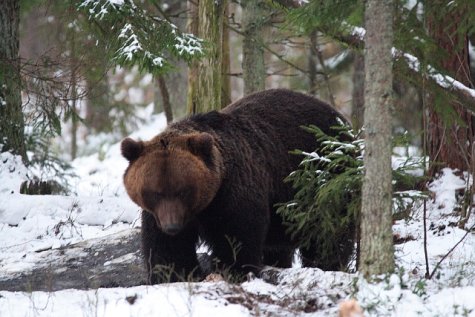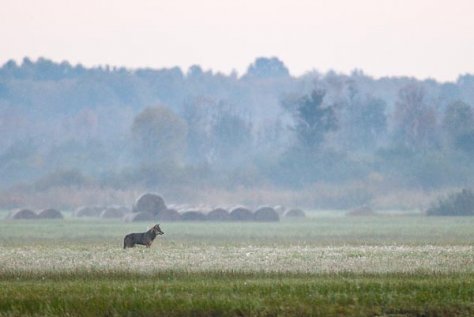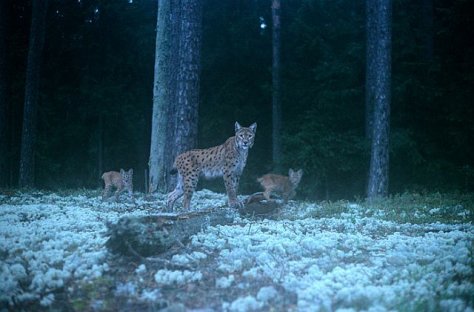How are our top predators doing?
Foto: Peeter Anijalg
Translation: Liis
Brown bear in the Alutaguse observation ground
There are reliable data on the numbers of brown bears, wolves and lynxes since 2003, when the present monitoring system for large carnivores was developed and applied.
Read more in the recently published report:
Eesti keskkonnanäitajad 2012 – Estonian Environmental Indicators 2012
(In Estonian; many graphs and illustrations)
The range and population size of species is assessed on the basis of reproductive individuals which most closely expresses the permanent population of an area.
Brown bear Pruunkaru Ursus arctos
The number of brown bears increased in the years 2003 – 2008, remaining stable after that. On average 65-70 female bears have cubs each year in our forests. The increase in the bear population is not related to an increased population density in the core area but rather to an expansion of the range of the species mainly towards western Estonia.
Photo: Arne Ader
Wolf. Kloostri meadow, Matsalu
Wolf Hunt, hallhunt ehk susi Canis lupus
Hunting restrictions for wolves were introduced in 2001. Until 2005 the population level of wolves was low due to intense and poorly regulated hunting. In recent years the number of reproductive wolf packs has fluctuated between 17 and 32. Wolves, relatively few in number, have a high increase potential and each fertile female wolf plays a significant role in the abundance of the species. Thus there are comparatively large fluctuations in the abundance of wolves over the years and predicting the numbers is complicated.
Foto: Sven Začek
Family
Lynx Ilves Felis lynx
Restrictions in hunting of lynxes were brought in force in Estonia in 2002. The abundance of the species achieved a maximum in 2008 – 2009, decreasing after that. The main cause of the decline in recent years has been a significant decrease in the natural growth rate of the population combined with an increased hunting.
The main reason for the decline is thought to be the manifold fall in the number of red deer, an important prey animal for lynxes, in the winter of 2009 / 2010 that was extraordinarily long, snowy and cold. The sharp fall in the number of prey animals created a situation where the number of lynxes in 2010 exceeded the environmental carrying capacity. We believe however that this is a temporary phenomenon.











